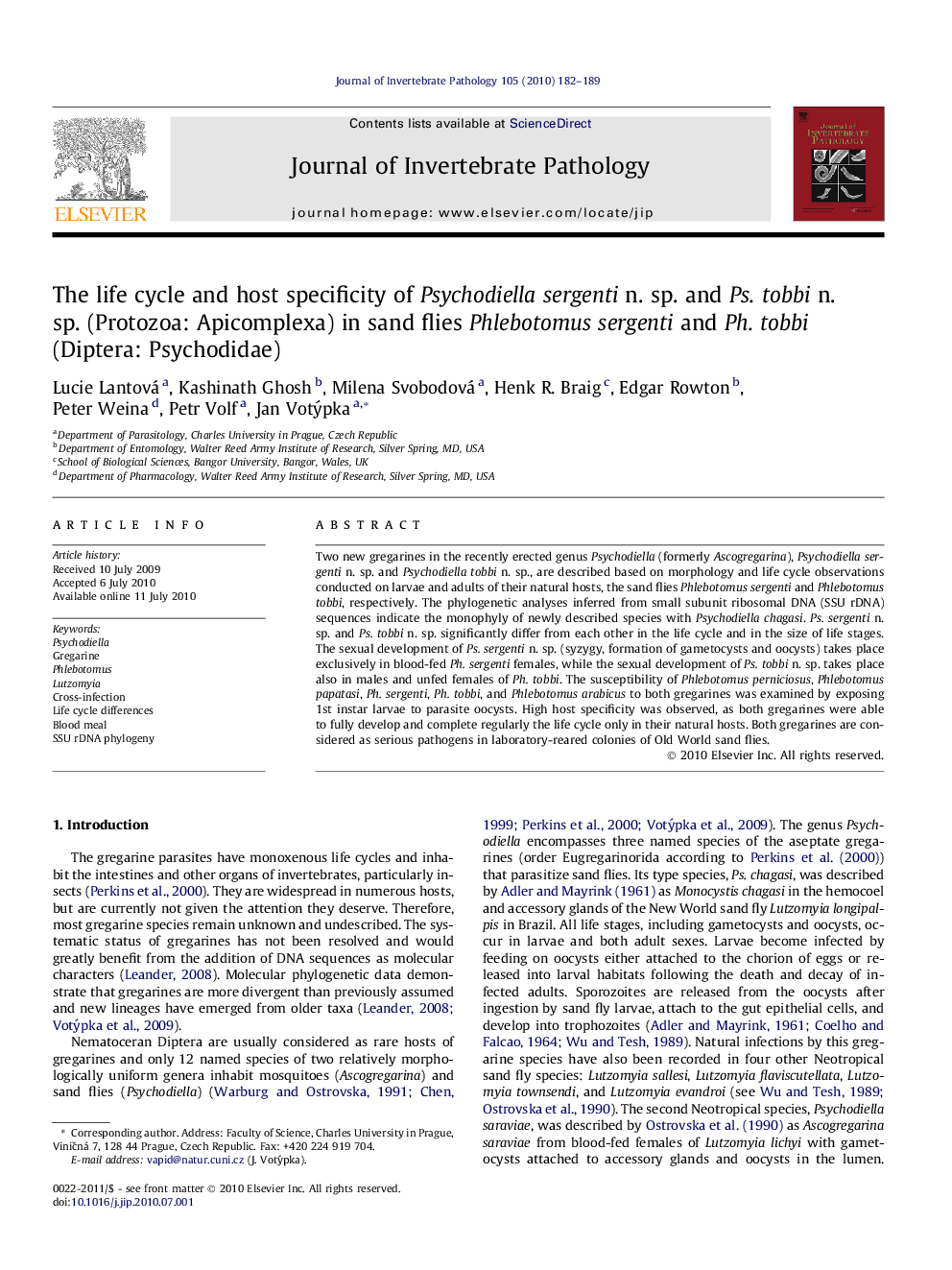| Article ID | Journal | Published Year | Pages | File Type |
|---|---|---|---|---|
| 4558136 | Journal of Invertebrate Pathology | 2010 | 8 Pages |
Two new gregarines in the recently erected genus Psychodiella (formerly Ascogregarina), Psychodiella sergenti n. sp. and Psychodiella tobbi n. sp., are described based on morphology and life cycle observations conducted on larvae and adults of their natural hosts, the sand flies Phlebotomus sergenti and Phlebotomus tobbi, respectively. The phylogenetic analyses inferred from small subunit ribosomal DNA (SSU rDNA) sequences indicate the monophyly of newly described species with Psychodiella chagasi. Ps. sergenti n. sp. and Ps. tobbi n. sp. significantly differ from each other in the life cycle and in the size of life stages. The sexual development of Ps. sergenti n. sp. (syzygy, formation of gametocysts and oocysts) takes place exclusively in blood-fed Ph. sergenti females, while the sexual development of Ps. tobbi n. sp. takes place also in males and unfed females of Ph. tobbi. The susceptibility of Phlebotomus perniciosus, Phlebotomus papatasi, Ph. sergenti, Ph. tobbi, and Phlebotomus arabicus to both gregarines was examined by exposing 1st instar larvae to parasite oocysts. High host specificity was observed, as both gregarines were able to fully develop and complete regularly the life cycle only in their natural hosts. Both gregarines are considered as serious pathogens in laboratory-reared colonies of Old World sand flies.
Graphical abstractFigure optionsDownload full-size imageDownload as PowerPoint slideResearch highlights► New sand fly gregarines Psychodiella sergenti n. sp. and Ps. tobbi n. sp. are described. ► The gregarines differ in their life cycles and morphology; mainly of oocysts. ► High host specificity of both gregarine species is revealed by cross-infections. ► Molecular characterization of the gregarines based on SSU rDNA is presented.
